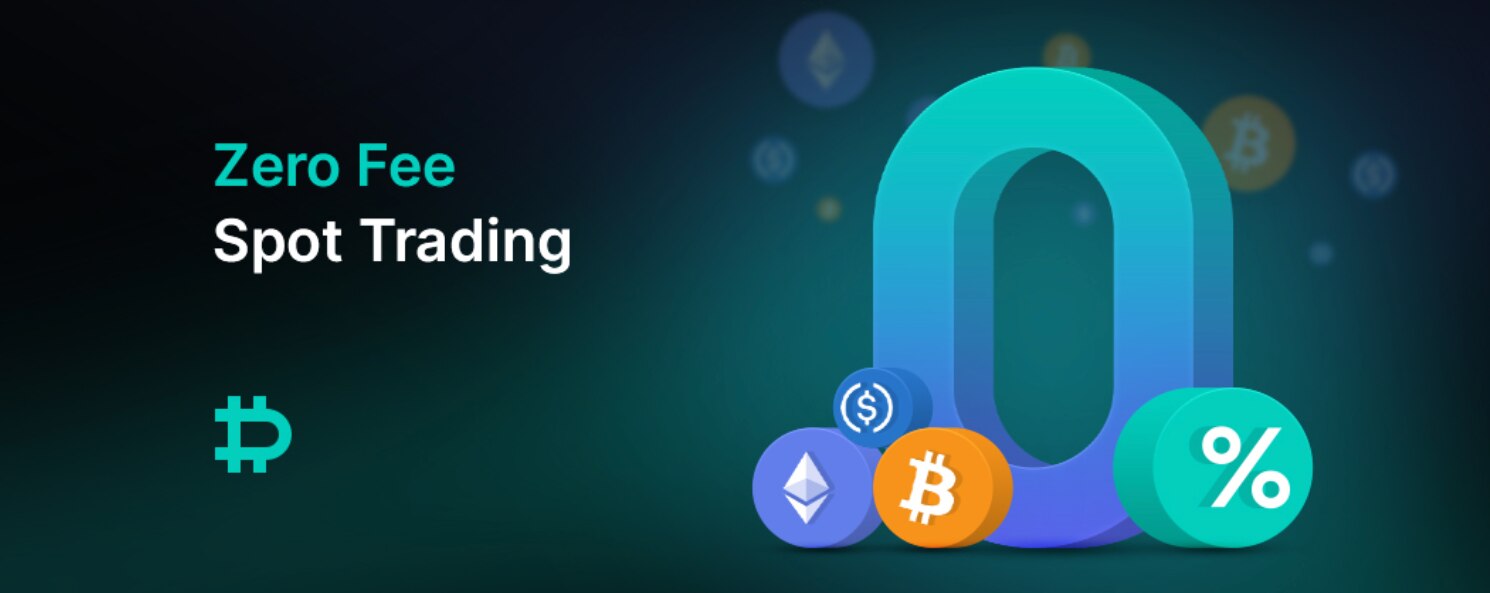In cryptocurrency, having a good grasp of different trading methods is crucial for you before entering this market.
One such popular technique is spot trading.
If you want to embark on your crypto journey, start with the fundamentals—understanding how to buy and sell digital currencies—before progressing into more advanced trading strategies.
Spot trading stands as the most fundamental and straightforward approach for exchanging cryptocurrencies.
When new traders venture into cryptocurrency trading, they commonly begin by engaging with spot markets.
Unlike long-term investments in crypto, where you can hold onto a cryptocurrency for an extended duration, spot trading revolves around buying and selling various cryptocurrencies to yield regular short-term profits.
Understanding Spot Trading in Crypto
In spot trading, it is essential to grasp fundamental concepts to succeed.
Let’s explore some key ideas:
Cryptocurrency Exchanges
Cryptocurrency exchanges are online platforms where you can buy, sell, and trade various digital currencies.
These exchanges create a bustling marketplace that facilitates seamless interaction among traders.
It’s essential to become familiar with the two main types of exchanges:
Centralized Exchanges: Platforms such as Coinbase and Bybit are controlled by a central authority.
They offer user-friendly interfaces and high liquidity for accessible trading experiences.
CEXs have specific responsibilities to their users:
- Ensuring Smooth Transactions
- Regulatory Compliance
- Anti-Money Laundering (AML)
- Platform Security
- Customer Protection
- Fair Pricing
- Know Your Customer (KYC)
Decentralized Exchanges: DEXs operate without a central authority, allowing users to trade directly from their wallets.
They prioritize privacy and security.
Examples are Uniswap and PancakeSwap.
Recommended Read: Centralized vs Decentralized Exchanges
Trading Pairs
Trading pairs are combinations of two cryptocurrencies that are traded against each other.
These pairs are represented as “Base/Quote” currencies.
For example, consider the BTC/USD trading pair:
Base Currency (BTC): The cryptocurrency you’re buying or selling.
Quote Currency (USD): The currency used to purchase the base currency.
Order Book
The Order Book in a market displays all the current buy and sell orders.
It provides a comprehensive overview of the trading activity for traders and investors.
Bid Prices: The prices at which traders are willing to buy a cryptocurrency.
Ask Prices: The prices at which traders are willing to sell a cryptocurrency.
For instance, suppose the order book for BTC/USD displays a bid of $40,000 and an ask of $40,200.
In this scenario, you can purchase BTC at $40,200 or sell it at $40,000.
Market Depth and Liquidity: Market depth refers to the volume of orders at different price levels.
When there is high, liquidity indicates a narrower spread between the bid and ask prices.
As a result, executing trades becomes easier without experiencing significant fluctuations in prices.
New to crypto trading? Learn How crypto exchanges determine prices?
Types of Crypto Spot Markets
Basic Spot Market: This is the standard market where cryptocurrencies are traded for other cryptocurrencies or fiat currencies.
Example: Trading Bitcoin for Ethereum.
Altcoin-Fiat Market: In this market, altcoins (alternative coins) are traded against fiat currencies like USD, EUR, etc.
Example: Exchanging Ripple (XRP) for US Dollars.
Crypto-Crypto Market: Here, different cryptocurrencies are traded against each other.
Example: Swapping Litecoin (LTC) for Cardano (ADA).
Major Pairs Market: This involves trading major cryptocurrencies against each other, like BTC/ETH or BTC/XRP.
Minor Pairs Market: Trading less popular cryptocurrencies against each other, such as LTC/XRP or ETH/XLM.
Local Exchanges: Some regions have localized spot markets catering to specific cryptocurrencies favored by the local community.
Key Features of Spot Trading
Real-Time Transactions: Traders can execute trades instantly, allowing them to take advantage of price fluctuations.
Market Order Control: Traders can place market orders for immediate execution or limit orders to set a specific buying/selling price.
Direct Ownership: When individuals purchase cryptocurrency on the spot market, they directly acquire asset ownership.
They can transfer it to their wallet if the trading is done on a CEX.
Liquidity: The liquidity of major cryptocurrencies on spot exchanges ensures convenient entry and exit from trades, making them highly accessible for investors.
Starter Friendly: Spot trading is an excellent option for beginners as it does not involve complicated derivatives.
Low Fees: Transaction fees in spot trading are generally lower compared to derivatives trading.
For example, If you buy 1 Bitcoin at the current market price of $40,000, you directly own that Bitcoin and can hold or sell it whenever you choose.
Long-Term Holding: Spot trading supports long-term investment strategies, enabling individuals to retain assets securely in their wallet.
Security: Direct ownership reduces exposure to risks associated with derivative contracts.
Strategies and Tips for Successful Spot Trading
Diversification for Risk Management
When managing risk, it’s wise to diversify your cryptocurrency portfolio.
Spreading your investments across different digital currencies can help mitigate the impact of price volatility on a single asset.
Consider holding a mix of well-established coins such as Bitcoin (BTC) and Ethereum (ETH), along with some promising altcoins like Cardano (ADA).
Research and Fundamental Analysis
Before investing, conduct thorough research.
Analyze a cryptocurrency’s technology, team, adoption, and potential use cases.
For instance, delve into Ethereum’s upgrades, regulatory developments, and its role in decentralized finance (DeFi) to gain insights for making informed decisions.
Trend Following and Technical Analysis
When analyzing market trends and determining optimal entry/exit points, technical analysis proves valuable.
Tools like Moving Averages (MA) and Relative Strength Index (RSI) can help assess price momentum for accurate predictions.
For example, if an asset’s price surpasses a critical resistance level, it may indicate an uptrend.
Setting Stop-Loss and Take-Profit Levels
Implementing stop-loss orders can help limit potential losses in trading, while take-profit orders secure gains.
For instance, if someone buys Bitcoin at $40,000, they could set a stop-loss at $38,000 to minimize losses and a take-profit at $45,000 to lock in profits.
Customizing each strategy based on your risk tolerance and understanding of the market is essential.
Potential Risks and Considerations
1. Volatility and Price Fluctuations:
The cryptocurrency market’s unpredictable nature contributes to rapid price fluctuations, which directly impact individuals engaged in spot trading.
For example, sudden and significant decreases in value, such as the 30% crash experienced by Bitcoin in May 2021, can lead to substantial financial losses.
2. Security Concerns:
Exchanges risk being hacked or having their security breached, which can result in a loss of funds.
An example is the 2014 Mt. Gox exchange hack that caused about 850,000 Bitcoin to be lost, revealing the vulnerabilities associated with the exchange.
3. Lack of Regulation:
The crypto spot market often operates in a legal grey area, exposing traders to potential uncertainties regarding regulations.
When regulatory crackdowns occur, such as China’s ban on crypto trading, they can significantly disrupt the market.
4. Liquidity Issues:
In certain markets, when there is low liquidity, it can result in “slippage.” This means that trades may be executed at prices that are different from what was intended.
Additionally, illiquid markets can pose limitations on swiftly entering or exiting positions.
5. Psychological Challenges:
In spot trading, the fast-paced nature often triggers emotional decision-making.
Emotions like FOMO (Fear of Missing Out) or FOL (Fear of Loss) can result in impulsive trades that ultimately impact profitability.
6. Lack of Understanding:
Insufficient knowledge regarding the assets being traded can result in making uninformed decisions.
For example, not fully comprehending the underlying technology of a cryptocurrency could lead to investing in a project that lacks practical application in the real world.
Recommended Read: How to choose a crypto exchange?
Advantages and Disadvantages of Spot Trading in Crypto
Advantages of Spot Trading
- Less risky: Spot trading is considered less risky than margin-based cryptocurrency trading. By engaging in spot trading, you can purchase assets without the constant concern of being liquidated due to price fluctuations.
- User-friendly: Spot trading in the spot market is incredibly user-friendly. You can evaluate the potential gains and risks involved in such trades.
- Accurate prices: Spot trading provides more accurate prices for cryptocurrencies as transactions occur transparently based on supply and demand principles.
- Control: Spot trading enables you to leverage crypto assets for various purposes, such as staking or facilitating online payments.
- Choice of crypto: In spot trading, you can trade a wide range of cryptocurrencies, unlike crypto derivatives that offer fewer currency pairs.
Disadvantages of Spot Trading
Crypto spot trading has its fair share of risks and drawbacks.
Let’s explore the most crucial risks of spot trading:
- No regulation: A significant portion of the crypto spot market remains unregulated, posing particular challenges and risks.
- Lack of flexibility: In spot trading, the flexibility offered in CFD or Futures trading is absent.
- Small wins: Regarding potential gains, the spot market offers smaller returns than CFD trading or margin trading.
Final Words
Spot orders in cryptocurrency trading are versatile, and you can approach them differently.
Your options could vary from HODLing your funds using dollar cost averaging to engaging in spot trades for midterm profits.
Alternatively, you might have a unique strategy of your own!
However, it is crucial to consider a few critical factors before confirming the transaction with your crypto wallet.
While spot trading is simpler compared to other techniques, it still carries risks.
It is essential to research any cryptocurrency you plan to invest in.




